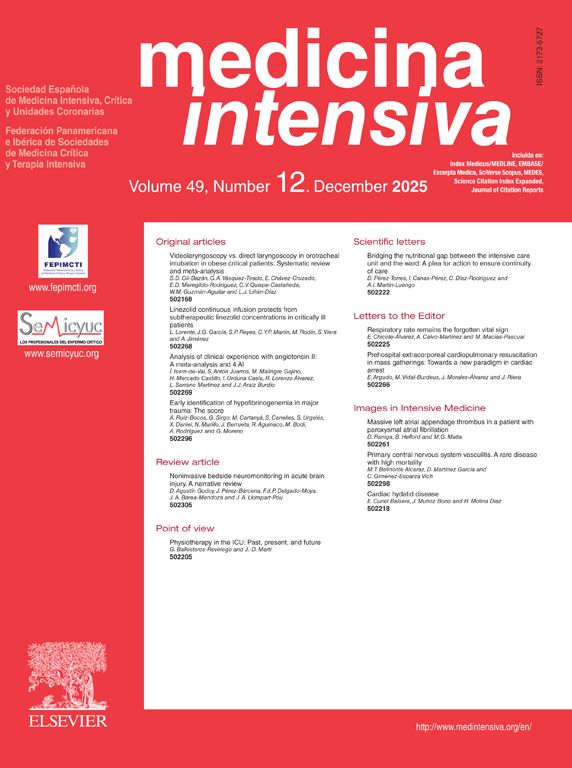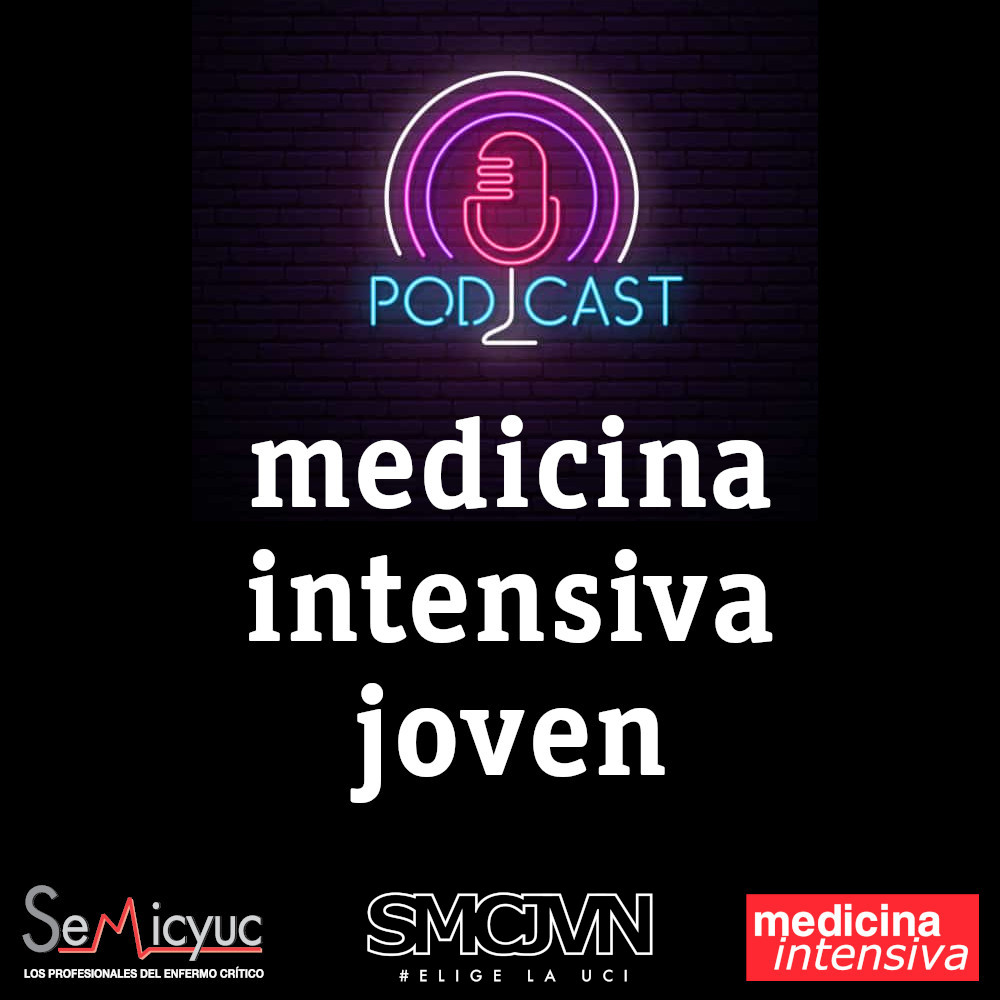To develop a clinical predictive score for hypofibrinogenemia in severely injured trauma patients.
DesignRetrospective cohort study.
SettingIntensive Care Unit (ICU) at Hospital Joan XXIII.
PatientsConsecutive patients admitted to the ICU for severe trauma with significant bleeding between 2015 and 2021 were included. Patients with an Injury Severity Score (ISS) < 16 were excluded.
InterventionsData were analyzed from the ICUTRAUMA registry, designed to establish the epidemiological profile of critically ill trauma patients in the province of Tarragona. The association between admission fibrinogen levels and ICU mortality was assessed using Cox regression with restricted cubic splines. A logistic regression model was then constructed to predict hypofibrinogenemia (≤203 mg/dl), from which a clinical score was developed and internally validated, and subsequently named FiT-6.
Main variables of interestAssociation between initial fibrinogen levels and ICU mortality.
ResultsA non-linear relationship was observed between fibrinogen levels and ICU mortality. Fibrinogen levels ≤ 203 mg/dl were significantly associated with increased mortality (HR: 1.66; 95%CI: 1.01–2.72). Six independent predictors of hypofibrinogenemia were identified: ionic calcium < 1 mmol/l, hemoglobin < 10 g/dl, platelets < 100 × 109/l, base excess < –6, Shock Index > –0.9, and lactate > 2 mmol/l. The model demonstrated good diagnostic performance (AUC-ROC 0.90) after cross-validation.
ConclusionsThe FiT-6 score shows high predictive ability for identifying hypofibrinogenemia, which is associated with increased ICU mortality.
Desarrollar una escala clínica predictiva de hipofibrinogenemia en pacientes con trauma grave.
DiseñoEstudio de cohortes retrospectivo.
ÁmbitoUnidad de Cuidados Intensivos (UCI) del Hospital Joan XXIII.
PacientesSe incluyeron pacientes ingresados en UCI, de forma consecutiva, por traumatismo grave y con hemorragia significativa entre 2015 y 2021. Se excluyeron pacientes con un ISS < 16.
IntervencionesSe analizaron los datos procedentes del registro ICUTRAUMA, diseñado para establecer el perfil epidemiológico de pacientes críticos traumáticos en la provincia de Tarragona. Se evaluó la relación entre los niveles de fibrinógeno al ingreso y la mortalidad en UCI mediante regresión de Cox con splines cúbicos restringidos. Posteriormente se construyó un modelo de regresión logística para predecir hipofibrinogenemia (≤203 mg/dl), a partir del cual se desarrolló y validó internamente una escala clínica que se denominó FiT-6.
Variables de interés principalesAsociación entre los niveles iniciales de fibrinógeno y la mortalidad en UCI.
ResultadosSe observó una relación no lineal entre los valores de fibrinógeno y la mortalidad en la UCI. A partir de niveles ≤ 203 mg/dl, la mortalidad aumentó significativamente (HR: 1,66; IC 95%: 1,01–2,72). Se identificaron seis predictoras independientes de hipofibrinogenemia: calcio iónico < 1 mmol/l, hemoglobina < 10 g/dl, plaquetas < 100 × 109/l, exceso de base < –6, índice de Shock > 0,9 y lactato > 2 mmol/l. El modelo mostró un buen rendimiento diagnóstico (AUROC: 0,90) tras validación cruzada.
ConclusionesLa escala FiT-6 presenta una alta capacidad predictiva para detectar hipofibrinogenemia, que se asocia a un incremento de la mortalidad en UCI.
Article
Go to the members area of the website of the SEMICYUC (www.semicyuc.org )and click the link to the magazine.












